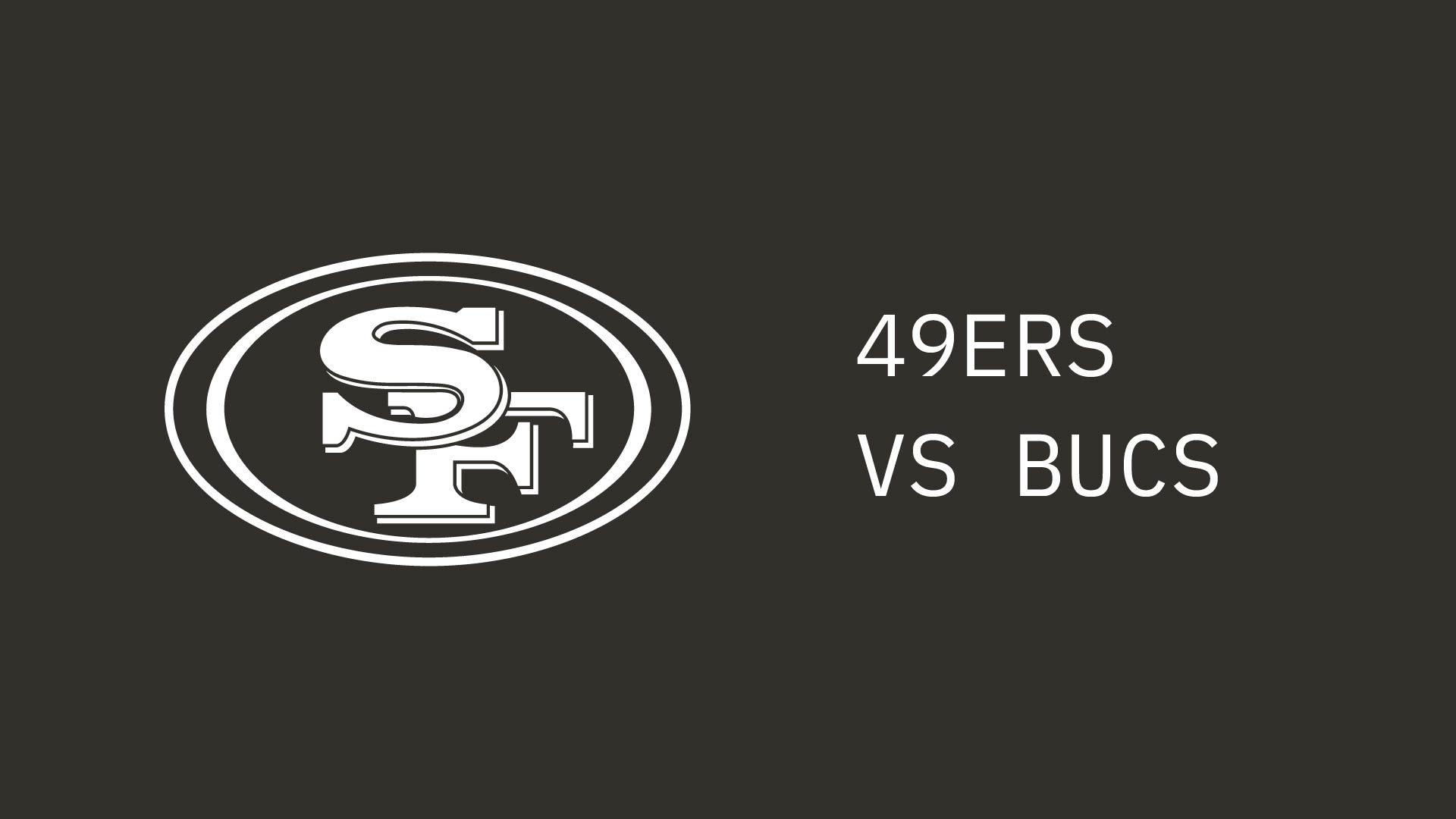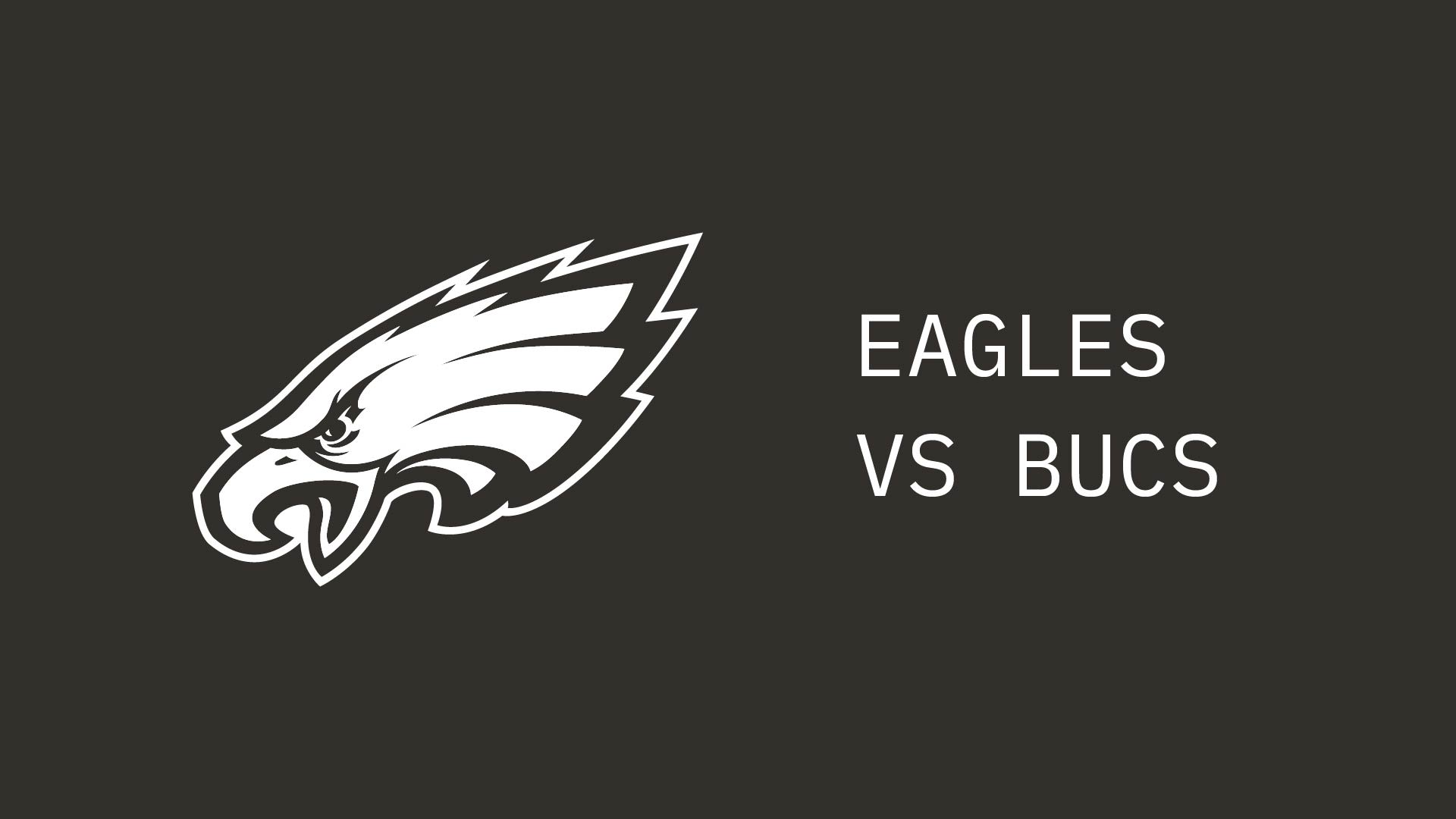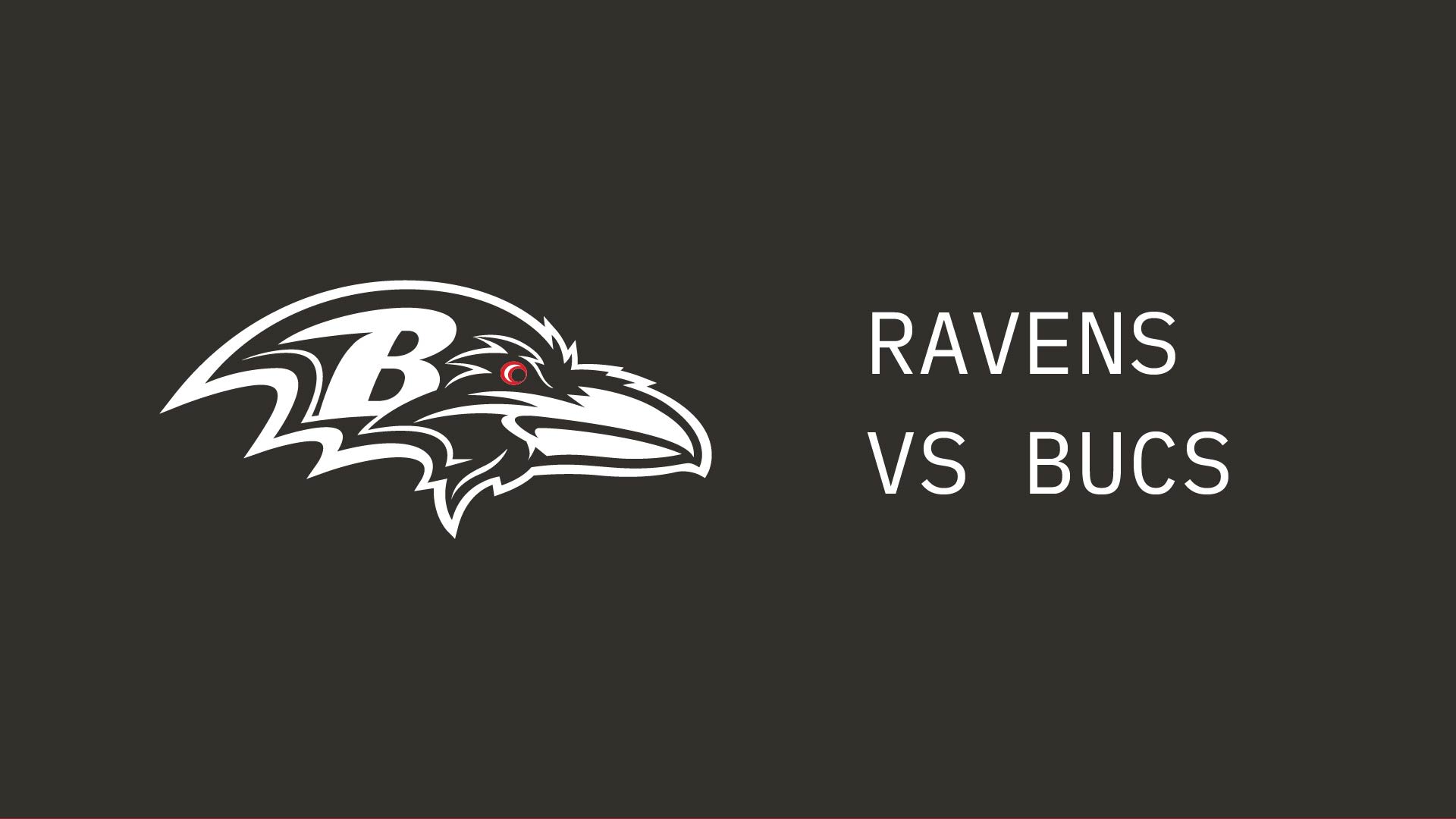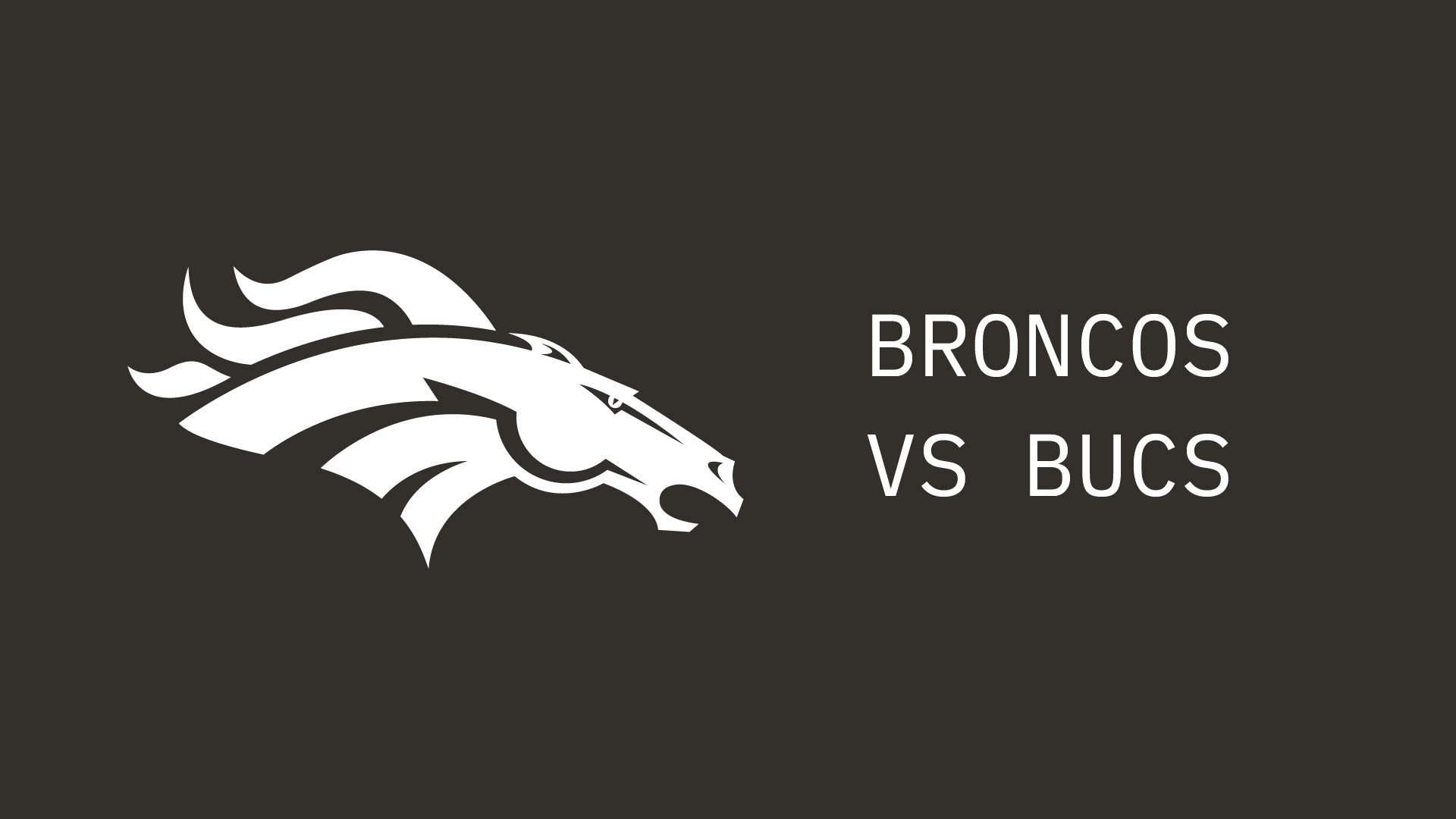The Tampa Bay Buccaneers have a number of new players after the conclusion of the 2020 NFL Draft on Saturday, and those players now have NFL numbers to call their own.
The Buccaneers wasted little time helping their seven 2020 draftees choose the jersey numbers they would wear as professionals, revealing the selections for each of the players they picked in the first six rounds before the draft was over. The two players chosen in the seventh round, Temple linebacker Chapelle Russell and Louisiana-Lafayette running back Raymond Calai, got their designations on Sunday.
Let's take a look at what each of those new Bucs will be wearing (on the team's new but familiar jerseys), what they wore in college and who else has used those numbers in franchise history. We'll also note some veteran Buccaneers who have been approved to change their jersey numbers in 2020, as that factors into some of the choices.
First-Round Offensive Tackle Tristan Wirfs: #78
Wirfs wore jersey number 74 at Iowa and if he had been able to carry that over to his Buccaneer career that would have been a fitting an optimistic choice. The best offensive tackle in team history to this point, and a member of the team's Ring of Honor at Raymond James Stadium, is Paul Gruber, who was also a first-round pick in 1988. However, that number is currently being worn by another one of the team's standout players and a starter on the O-Line, guard Ali Marpet.
The good news for Wirfs is that he could very quickly become the most accomplished offensive player to wear number 78 in franchise history if things go well. The two most memorable number 78s in franchise history were defensive ends John Cannon (1982-90) and Marcus Jones (1996-2001). Like Wirfs, Jones was a first-round draft pick, drafted as a defensive tackle in 1996. Five offensive linemen have worn number 78 for the Buccaneers in the past – Kurt Schumaker, Tim Irwin, Matt Stinchcomb, Arron Sears and Gosder Cherilus – but none for more than three seasons.
Second-Round Safety Antoine Winfield Jr.: #31
This one could be a bit confusing for Buccaneer fans until there is some time to adjust. The Bucs already had a safety running the field in that number the last two years, as 2018 draft pick Jordan Whitehead started his career with that jersey. However, Whitehead will be switching to no. 33 going forward.
The 33 jersey was only available because cornerback Carlton Davis, another 2018 draft pick, is moving to number 24, which veteran corner Brent Grimes was wearing when Davis arrived. In addition, second-year cornerback Sean Murphy-Bunting is switching from 26 to 23, which was occupied by Deone Bucannon when Murphy-Bunting was drafted last year. Veteran safety Andrew Adams is taking that opportunity to change back to the no. 26 jersey he wore in 2018, his first year with the Bucs, before briefly leaving for Detroit and then returning last year and wearing no. 39.
Of course, as was a newsworthy event earlier this offseason, wide receiver Chris Godwin has switched from no. 12 to no. 14 to accommodate new Bucs quarterback Tom Brady. Tight end Jordan Leggett did the same, switching from 87 to 81 so that Brady's pal, Rob Gronkowski, could have the same number he had with the Patriots.
But back to Winfield. He wore no. 11 as a Golden Gopher, which was never going to be an option because defensive backs are required to wear numbers in the 20-49 range in the NFL. Winfield at least gets to retain the second digit of his collegiate number. Before Whitehead, the 31 jersey generally bounced around from one defensive back to another. No player in team history has worn it for more than four seasons or 42 games. Had he retained that number, Whitehead probably would have become the most prominent number 31 in team history; at this point, that honor probably goes to Phillip Buchanon, the aforementioned 42-game player. Running back Mazio Royster is the only offensive player to wear that number for Tampa Bay.
Third-Round RB Ke'Shawn Vaughn: #30
The number 30 went unused in Tampa in 2019 and also doesn't have a very prominent place in Buccaneers history…save for one very memorable moment. Vernon Turner was wearing it in 1994 when he recorded the first punt return for a touchdown in franchise history.
Like Winfield, Vaughn had no choice but to switch from his college number, which was 5. Running backs also must have numbers in the 20-49 range in the NFL. He could have gone with the open no. 25 but chose 30 instead and, to continue a theme so far, has a pretty open path to becoming the top no. 30 in team history. That number has been worn by a lot of former Buccaneers – 30 in all – but none for more than four seasons. The most prominent former no. 30s in team history are probably safeties Mark Robinson (1988-90, 40 games, 40 starts) and Bradley McDougald (three-plus seasons, 50 games, 36 starts). The last running back to wear no. 30 for the Buccaneers was Brian Leonard in 2013.
Fifth-Round WR Tyler Johnson: #18
Johnson simply tripled his number in going from college to the pros.
The high school quarterback-turned-collegiate receiver wore no. 6 at Minnesota, but in the NFL receivers must wear a number between 10-19 or 80-89. In today's NFL, the vast majority of receivers choose numbers in the teens, and Johnson found 18 open on the Bucs roster and waiting for him.
Quarterback Parnell Dickinson was the first Buccaneer to don no. 18 in a game in the team's inaugural season of 1976. After that, it gathered mothballs for about a quarter century before the NFL started allowing receivers to pick numbers in the 10-19 range. From 2004 through last season (briefly), the number 18 was worn in the regular season for Tampa Bay by seven different receivers. Here they are, with their total games played noted as well: Derrick Lewis (0), Brian Clark (24), Sammie Stroughter (33), Skye Dawson (7), Louis Murphy (17), Bernard Reedy (9) and Ishmael Hyman (2). So I guess that one goes to Stroughter at the moment; he did score on a kickoff return once.
View pictures of WR Tyler Johnson, the 161st overall pick in the 2020 NFL Draft
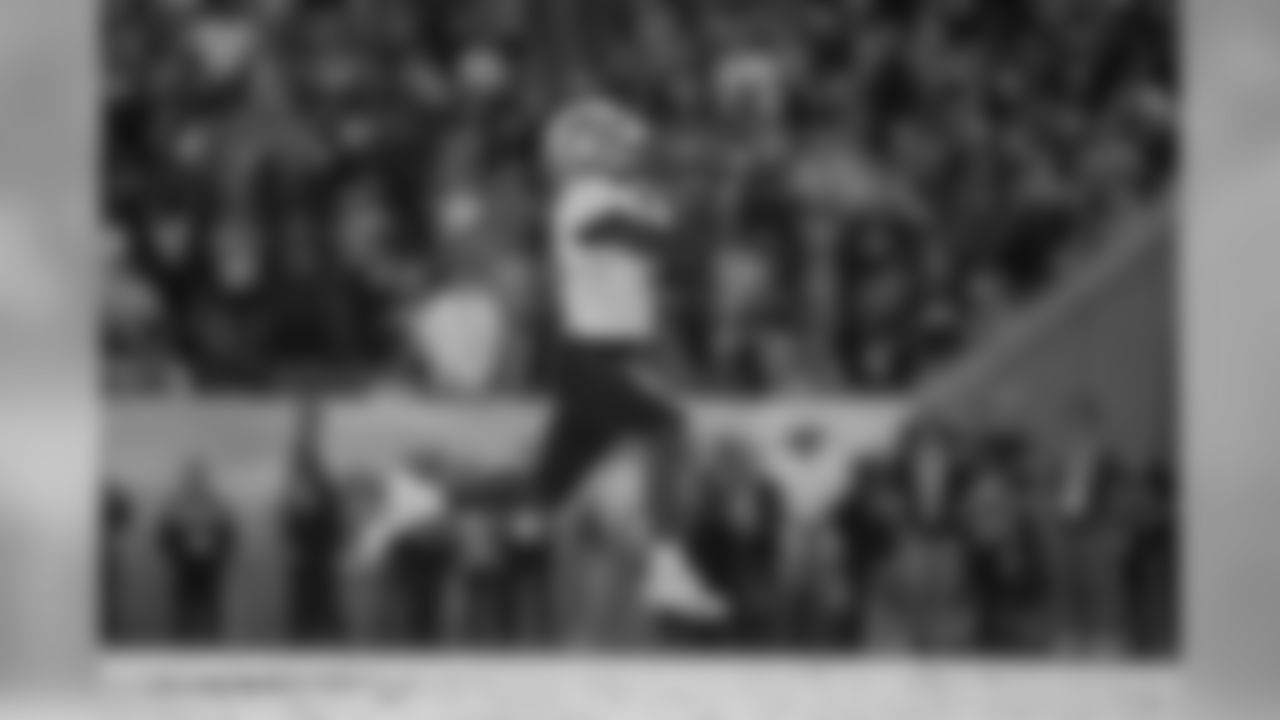
TAMPA, FL - JANUARY 01, 2020 - Wide Receiver Tyler Johnson #6 during the 2020 Outback Bowl game between the Minnesota Golden Gophers and Auburn Tigers at Raymond James Stadium. Photo By Kyle Zedaker/Tampa Bay Buccaneers

TAMPA, FL - JANUARY 01, 2020 - Wide Receiver Tyler Johnson #6 during the 2020 Outback Bowl game between the Minnesota Golden Gophers and Auburn Tigers at Raymond James Stadium. Photo By Kyle Zedaker/Tampa Bay Buccaneers
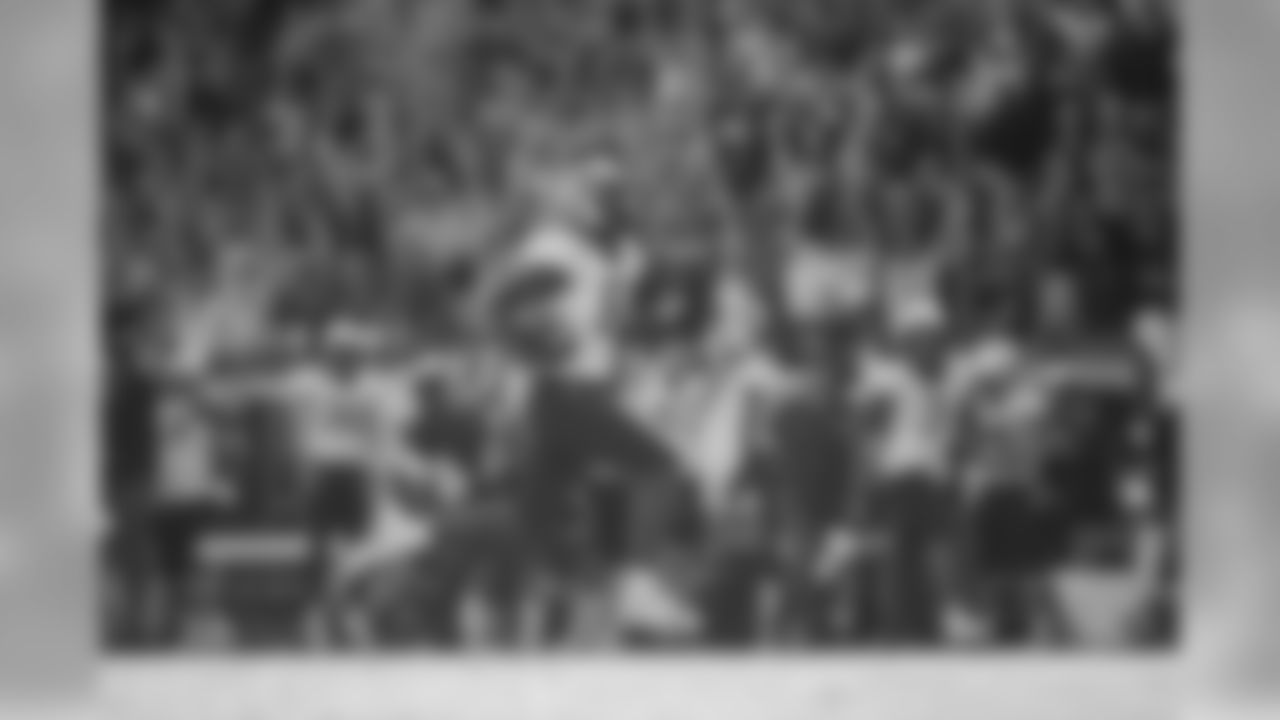
TAMPA, FL - JANUARY 01, 2020 - Wide Receiver Tyler Johnson #6 during the 2020 Outback Bowl game between the Minnesota Golden Gophers and Auburn Tigers at Raymond James Stadium. Photo By Kyle Zedaker/Tampa Bay Buccaneers

TAMPA, FL - JANUARY 01, 2020 - Wide Receiver Tyler Johnson #6 during the 2020 Outback Bowl game between the Minnesota Golden Gophers and Auburn Tigers at Raymond James Stadium. Photo By Kyle Zedaker/Tampa Bay Buccaneers
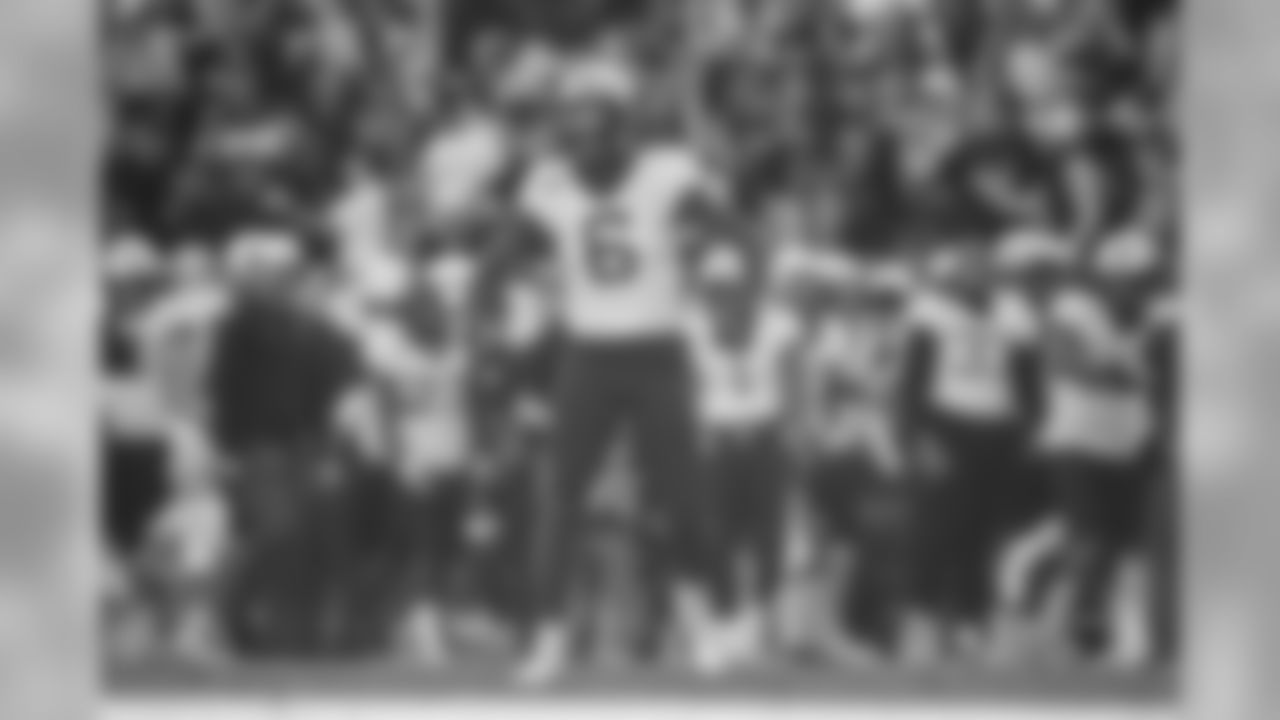
TAMPA, FL - JANUARY 01, 2020 - Wide Receiver Tyler Johnson #6 during the 2020 Outback Bowl game between the Minnesota Golden Gophers and Auburn Tigers at Raymond James Stadium. Photo By Kyle Zedaker/Tampa Bay Buccaneers
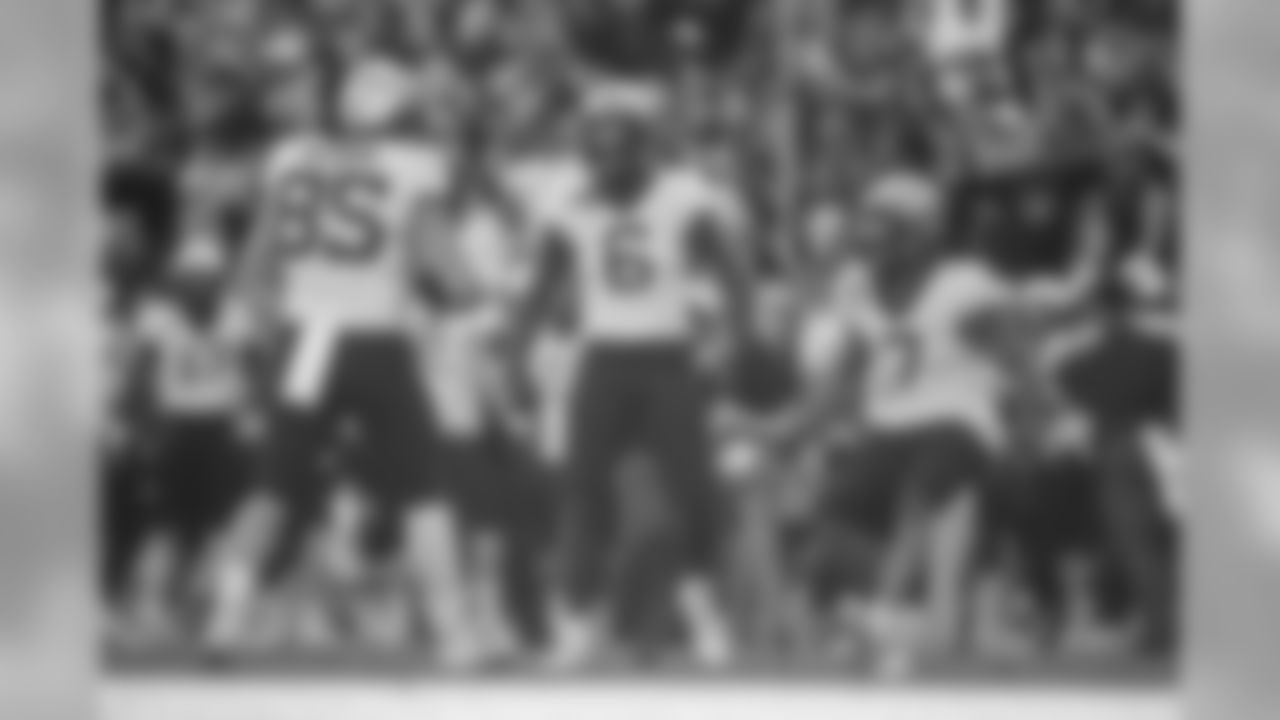
TAMPA, FL - JANUARY 01, 2020 - Wide Receiver Tyler Johnson #6 during the 2020 Outback Bowl game between the Minnesota Golden Gophers and Auburn Tigers at Raymond James Stadium. Photo By Kyle Zedaker/Tampa Bay Buccaneers

Minnesota wide receiver Tyler Johnson reaches over the goal line for a touchdown beyond the defense of Indiana State defensive back Kevin Beacham in the second quarter of an NCAA college football game Saturday, Sept. 10, 2016, in Minneapolis. (AP Photo/Bruce Kluckhohn)

Minnesota wide receiver Tyler Johnson (6) scores a touchdown against Michigan State during the fourth quarter of an NCAA college football game Saturday, Oct. 14, 2017, in Minneapolis. Michigan State defeated Minnesota 30-27. (AP Photo/Andy Clayton-King)
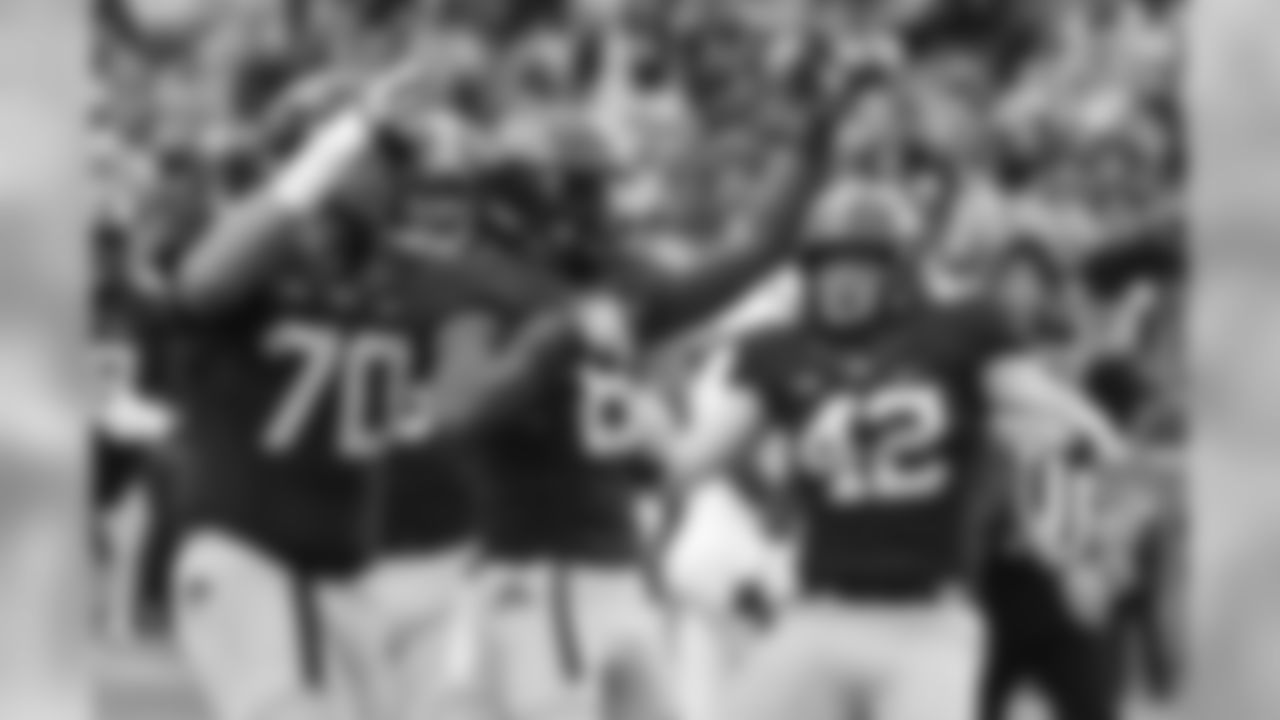
Minnesota wide receiver Tyler Johnson celebrates his 8 yard touchdown reception against Illinois in the first half of an NCAA college football game, Saturday, Oct 21, 2017, in Minneapolis. (AP Photo/John Autey)
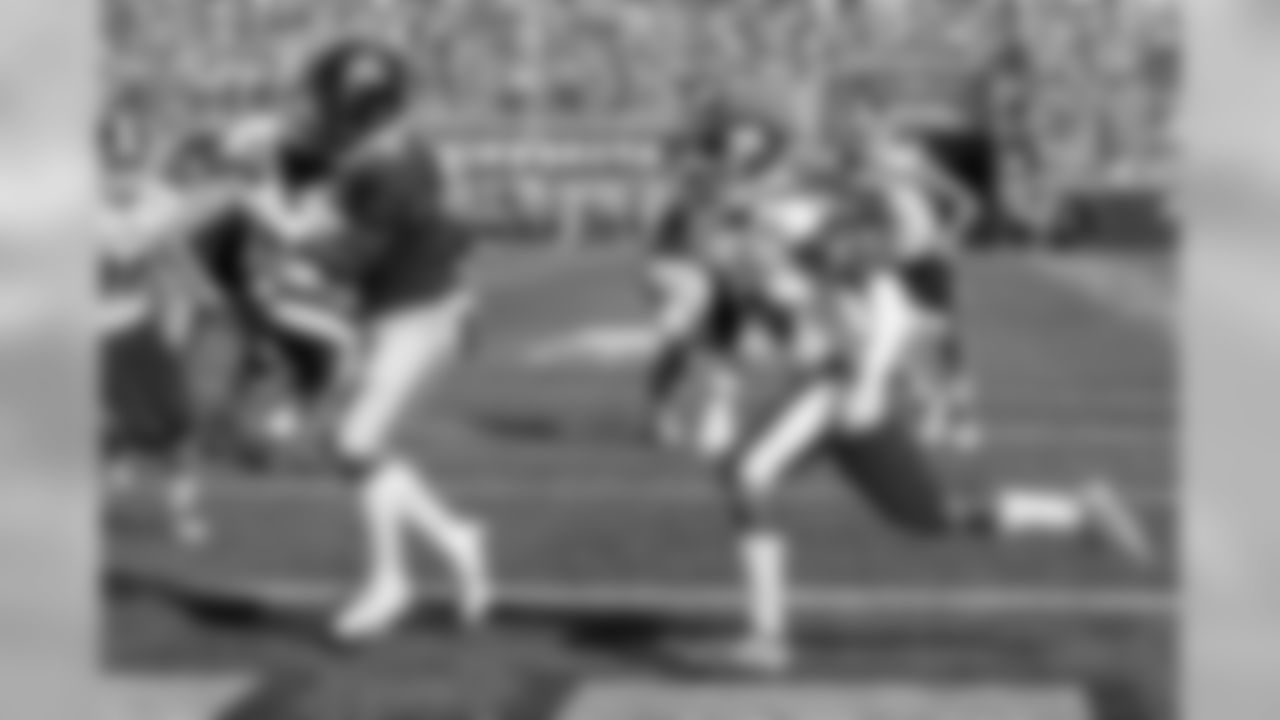
Minnesota wide receiver Tyler Johnson, left, catches a pass for a touchdown in front of Miami (Ohio) defensive back Travion Banks in the first half of an NCAA football game Saturday, Sept. 15, 2018, in Minneapolis. (AP Photo/Bruce Kluckhohn)

Minnesota wide receiver Tyler Johnson, left, gets past Miami (Ohio) defensive back Joshua Allen for a touchdown in the first half of an NCAA football game Saturday, Sept. 15, 2018, in Minneapolis. (AP Photo/Bruce Kluckhohn)

Minnesota wide receiver Tyler Johnson gets past Miami (Ohio) defenders for a touchdown in the first half of an NCAA football game Saturday, Sept. 15, 2018, in Minneapolis. Minnesota won 26-3. (AP Photo/Bruce Kluckhohn)
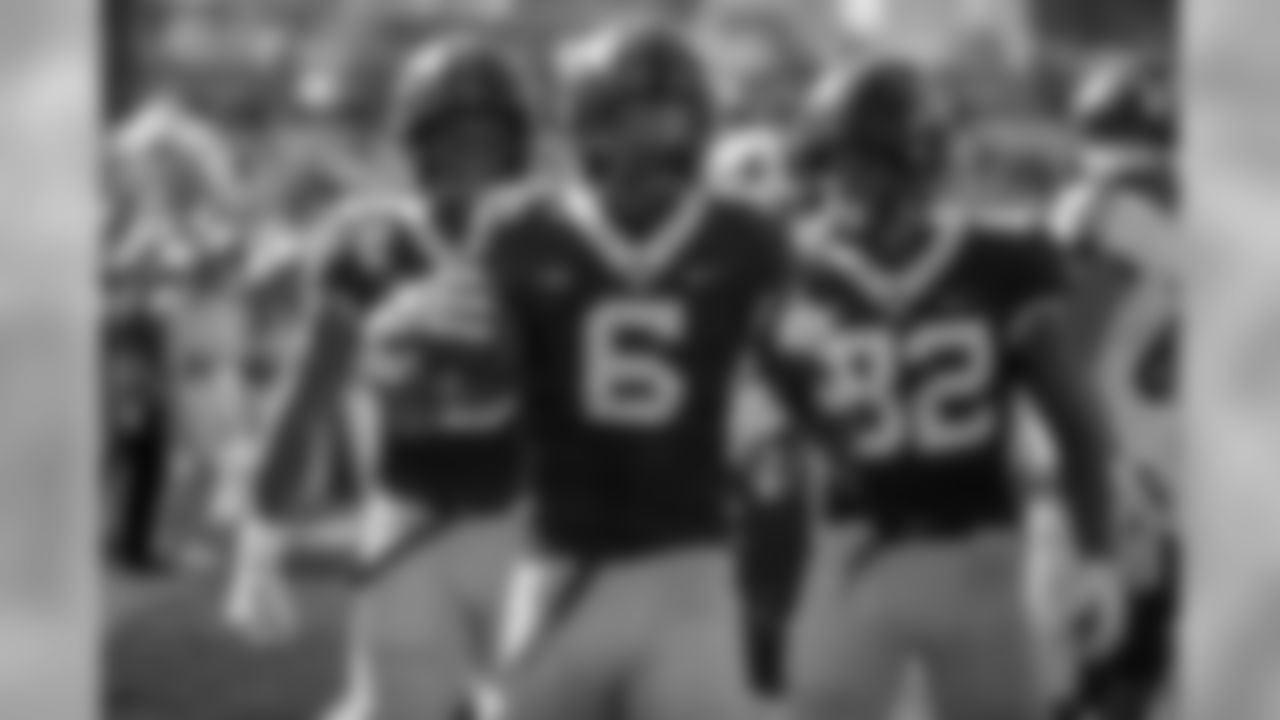
Minnesota wide receiver Tyler Johnson celebrates his touchdown against Miami (Ohio) in the first half of an NCAA football game Saturday, Sept. 15, 2018, in Minneapolis. Minnesota won 26-3. (AP Photo/Bruce Kluckhohn)
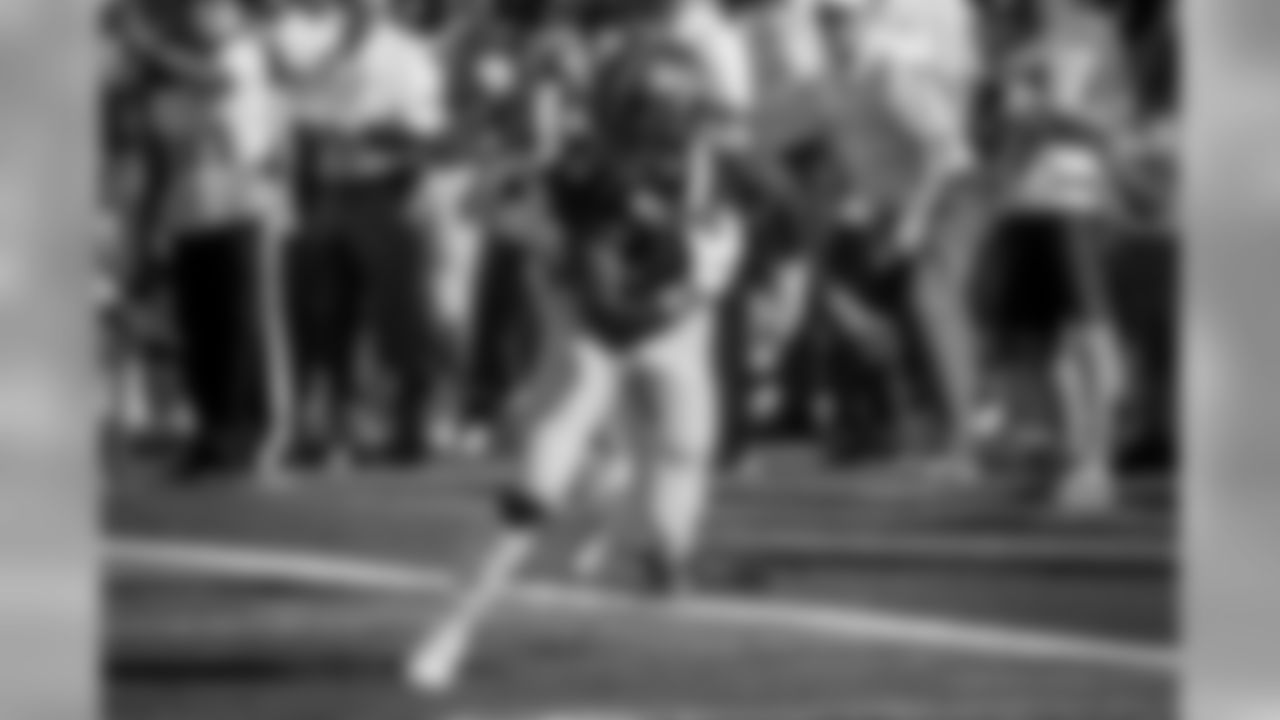
Minnesota wide receiver Tyler Johnson catches a pass against Miami (Ohio) in the first half of an NCAA football game Saturday, Sept. 15, 2018, in Minneapolis. Minnesota won 26-3. (AP Photo/Bruce Kluckhohn)

Iowa's Julius Brents intercepts the ball intended for Minnesota wide receiver Tyler Johnson during an NCAA college football game Saturday, Oct. 6, 2018, in Minneapolis. Iowa won 48-31. (AP Photo/Stacy Bengs)
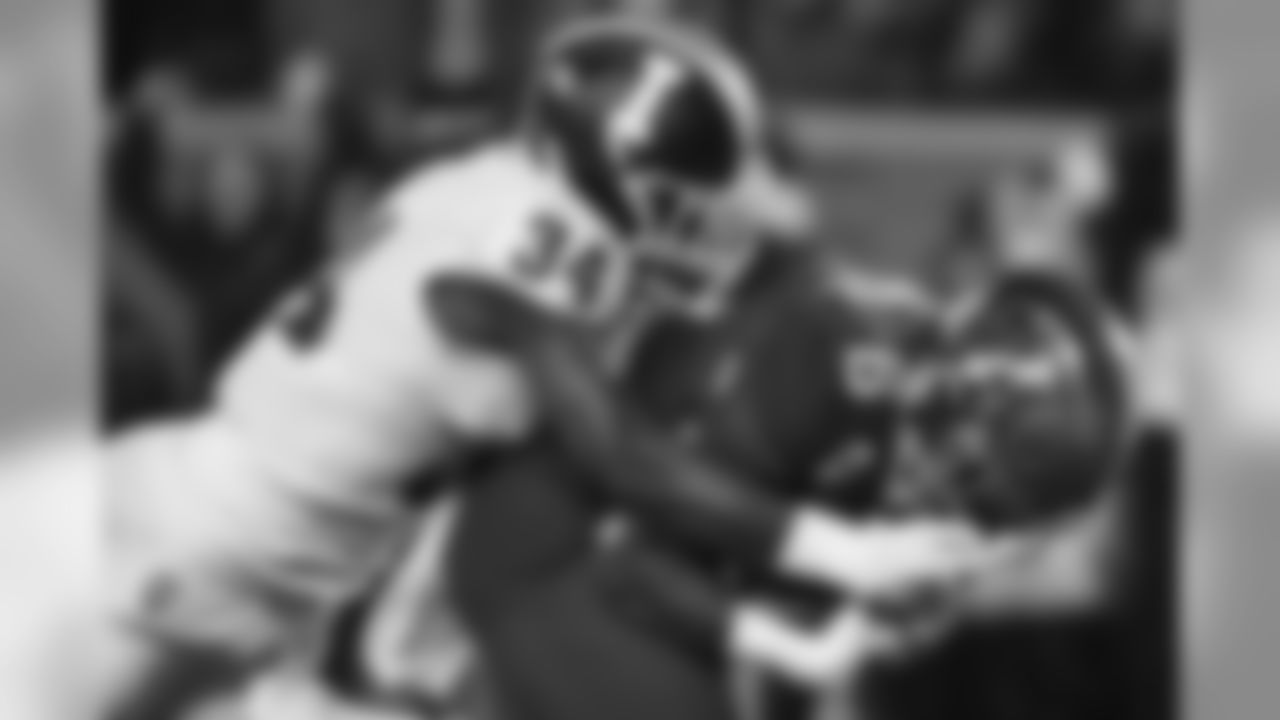
Indiana's Cam Jones tries to tackle Minnesota wide receiver Tyler Johnson during an NCAA college football game Friday, Oct. 26, 2018, in Minneapolis. (AP Photo/Stacy Bengs)

Minnesota's Tyler Johnson against Purdue in the second half of a NCAA college football game Saturday, Nov. 10, 2018, in Minneapolis. (AP Photo/Andy Clayton-King)

FILE - In this Sept. 15, 2018, file photo, Minnesota wide receiver Tyler Johnson catches a pass against Miami (Ohio) in the second half of an NCAA football game, in Minneapolis. Northwestern plays this week at Minnesota, where the Gophers need one more win for bowl-game eligibility.(AP Photo/Bruce Kluckhohn, File)

Minnesota wide receiver Tyler Johnson (6) against South Dakota State during an NCAA college football game Thursday, Aug. 29, 2019, in Minneapolis. (AP Photo/Stacy Bengs)
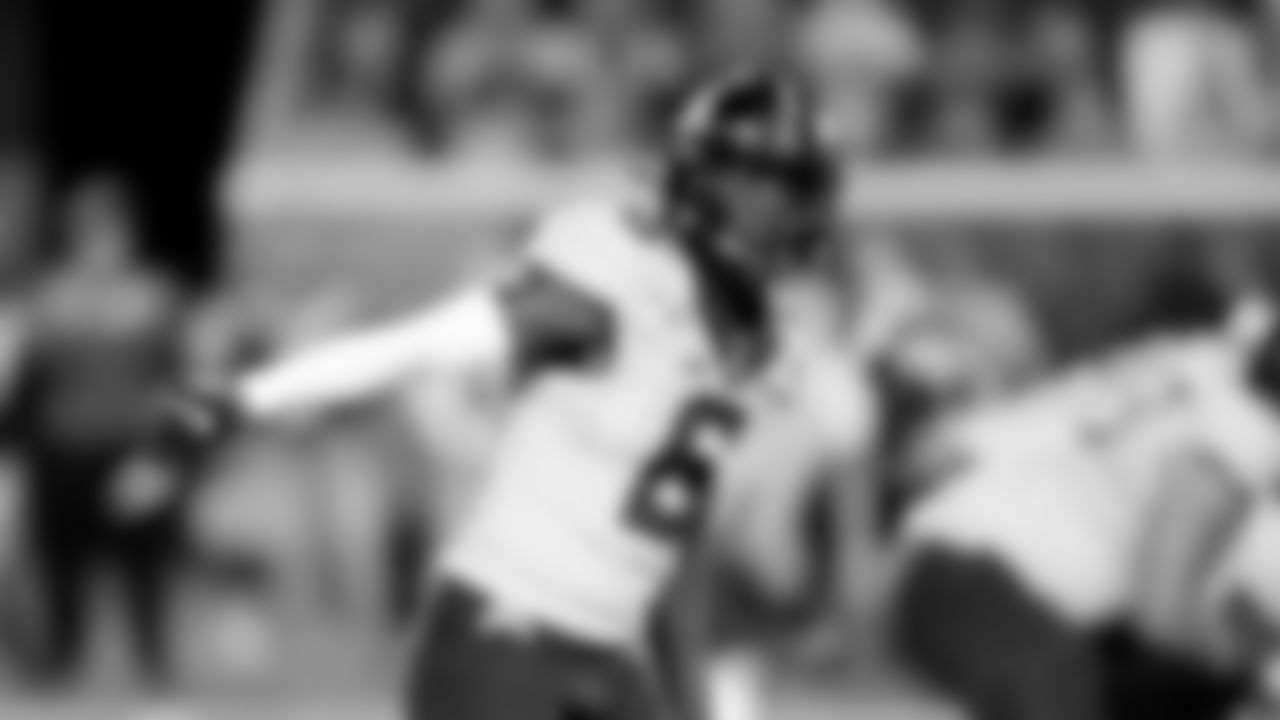
Minnesota wide receiver Tyler Johnson during an NCAA football game against South Dakota State Thursday, Aug. 29, 2019 in Minneapolis. (AP Photo/Andy Clayton- King)

Minnesota wide receiver Tyler Johnson during an NCAA football game against South Dakota State Thursday, Aug. 29, 2019 in Minneapolis. (AP Photo/Andy Clayton- King)
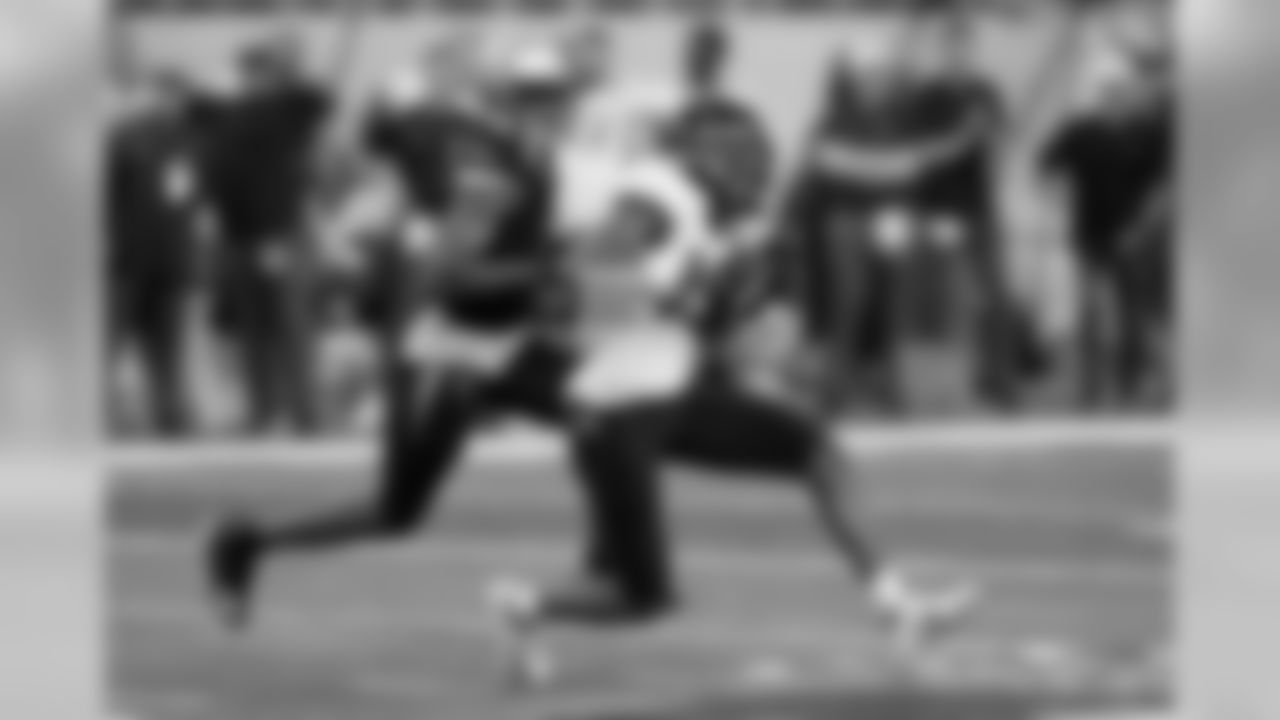
FILE - In this Dec. 26, 2018, file photo, Minnesota wide receiver Rashod Bateman (13) is chased by Georgia Tech defensive back Lamont Simmons during the first half of the Quick Lane Bowl NCAA college football game in Detroit. Tyler Johnson has the most polished credentials for Minnesota, but Bateman has quickly emerged from a deep group of wide receivers as more than just a sidekick. The Gophers play Georgia Southern this week, a school about three hours from Bateman's hometown. (AP Photo/Carlos Osorio, File)

Minnesota wide receiver Tyler Johnson (6) catches a pass for a touchdown in front of Georgia Southern cornerback Monquavion Brinson (4) in the fourth quarter of an NCAA college football game Saturday, Sept. 14, 2019, in Minneapolis. (AP Photo/Bruce Kluckhohn)

Minnesota wide receiver Tyler Johnson (6) catches a pass for a touchdown as Illinois linebacker Dele Harding (9) tries to stop him in the second quarter at an NCAA college football game Saturday, Oct. 5, 2019, in Minneapolis. (AP Photo/Bruce Kluckhohn)
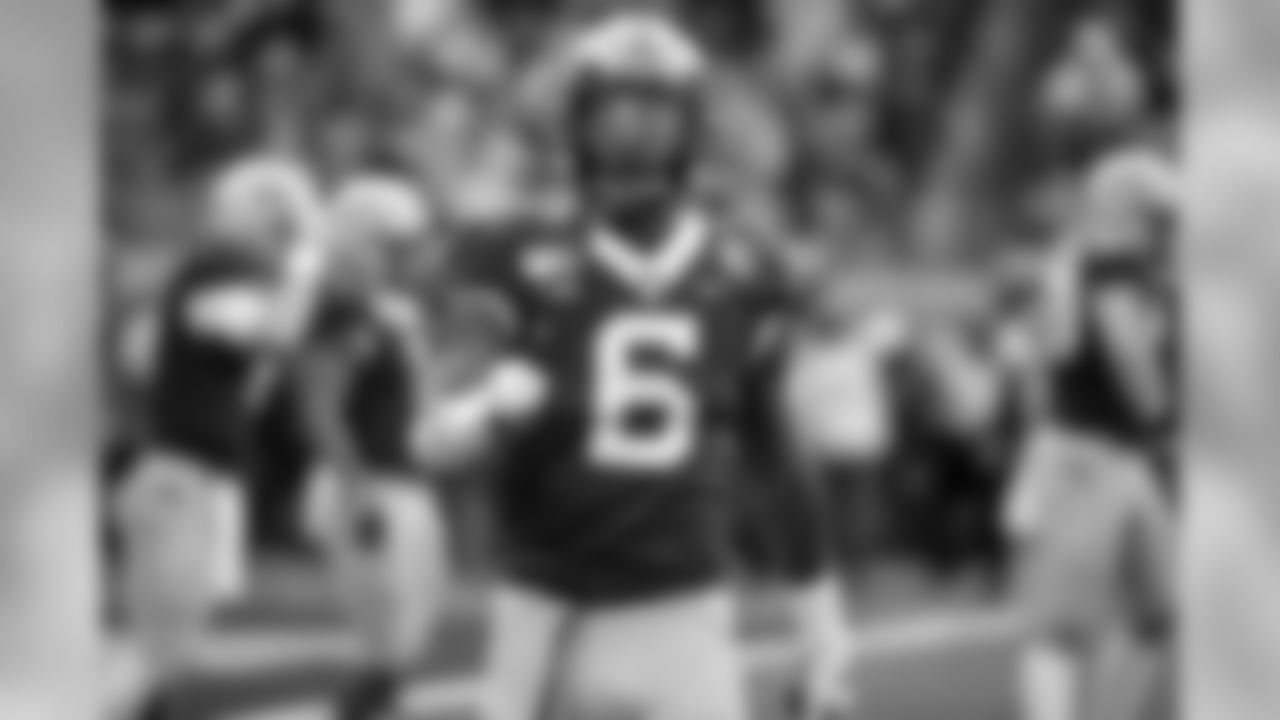
Minnesota wide receiver Tyler Johnson checks with an official as he lines up against Illinois in the third quarter at an NCAA college football game Saturday, Oct. 5, 2019, in Minneapolis. (AP Photo/Bruce Kluckhohn)

Minnesota wide receiver Tyler Johnson (6) during an NCAA college football game against Maryland, Saturday, Oct. 26, 2019, in Minneapolis. Minnesota won 52-10. (AP Photo/Stacy Bengs)

Minnesota wide receiver Tyler Johnson (6) during an NCAA college football game against Maryland, Saturday, Oct. 26, 2019, in Minneapolis. Minnesota won 52-10. (AP Photo/Stacy Bengs)
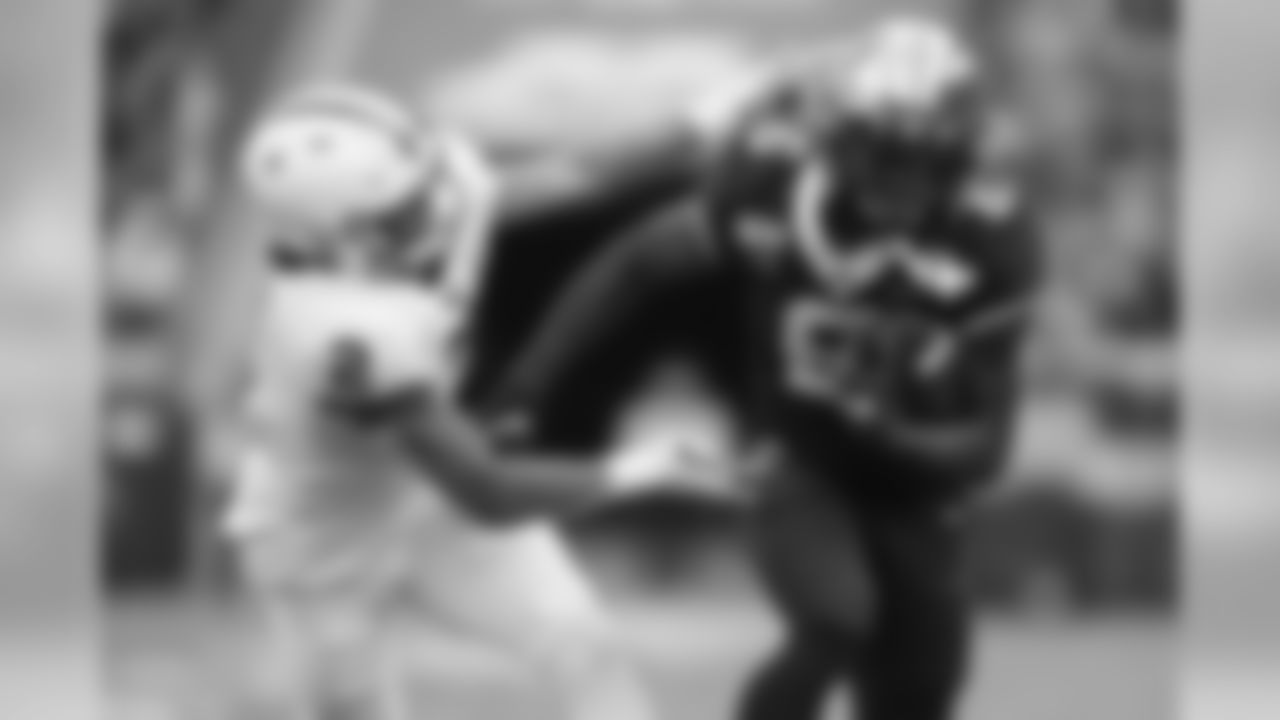
Minnesota wide receiver Tyler Johnson (6) holds onto the ball against Penn State cornerback Keaton Ellis (2) during an NCAA college football game, Saturday, Nov. 9, 2019, in Minneapolis. (AP Photo/Stacy Bengs)
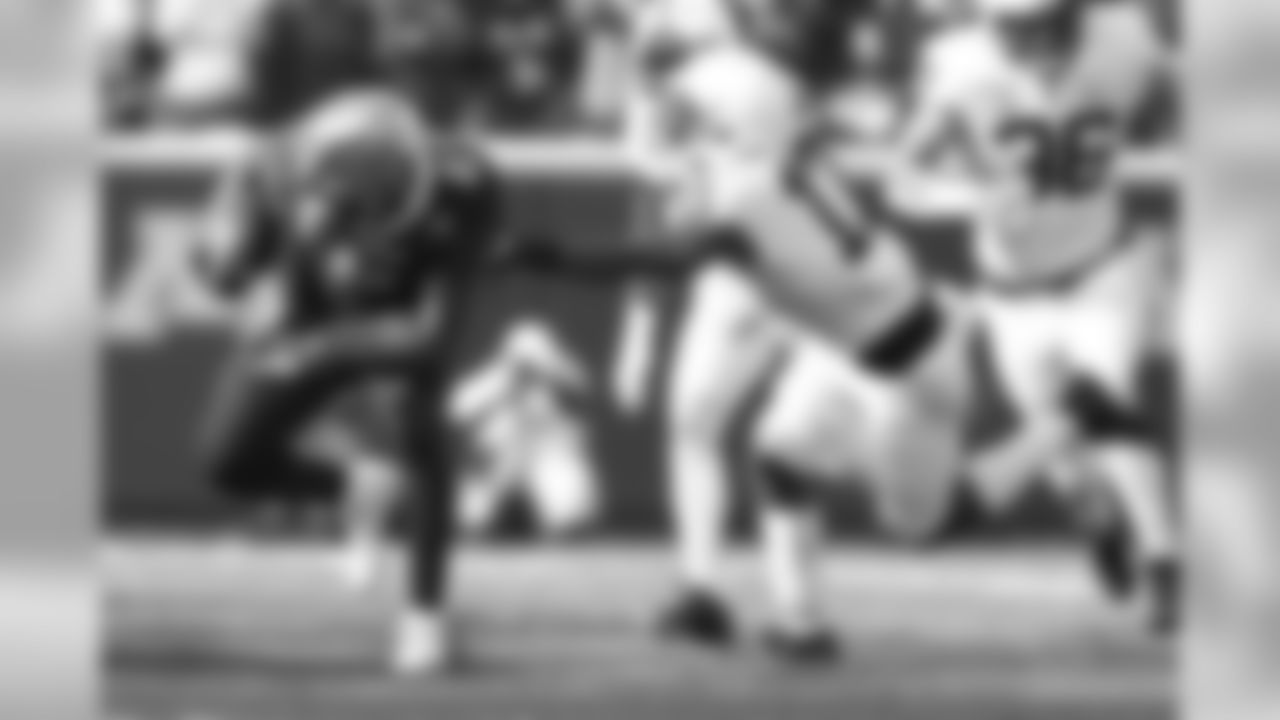
Minnesota wide receiver Tyler Johnson (6) escapes a tackle from Penn State safety Garrett Taylor (17) during an NCAA college football game, Saturday, Nov. 9, 2019, in Minneapolis. (AP Photo/Stacy Bengs)

Iowa defensive back Geno Stone, left, chases down Minnesota wide receiver Tyler Johnson, right, during the first half of an NCAA college football game, Saturday, Nov. 16, 2019, in Iowa City, Iowa. (AP Photo/Matthew Putney)

Minnesota wide receiver Tyler Johnson (6) catches a touchdown pass over Northwestern cornerback Cam Ruiz (18) during the second half of an NCAA football game Saturday, Nov. 23, 2019, in Evanston, Ill. Minnesota won 38-22. (AP Photo/Paul Beaty)

Minnesota wide receiver Tyler Johnson (6) during an NCAA college football game against Wisconsin, Saturday, Nov. 30, 2019, in Minneapolis. Wisconsin won 38-17. (AP Photo/Stacy Bengs)

Minnesota wide receiver Tyler Johnson (6) during an NCAA college football game against Wisconsin, Saturday, Nov. 30, 2019, in Minneapolis. Wisconsin won 38-17. (AP Photo/Stacy Bengs)
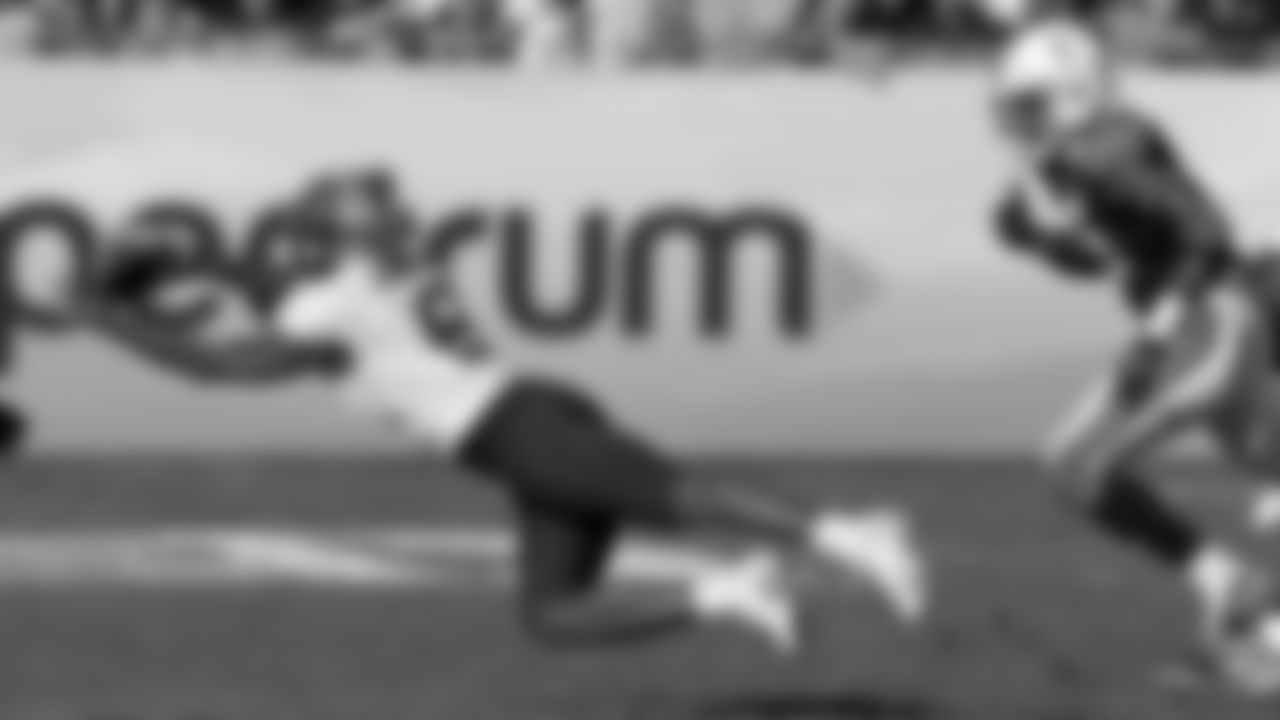
Minnesota wide receiver Tyler Johnson (6) makes a diving catch in front of Auburn defensive back Jordyn Peters (15) during the second half of the Outback Bowl NCAA college football game Wednesday, Jan. 1, 2020, in Tampa, Fla. (AP Photo/Chris O'Meara)
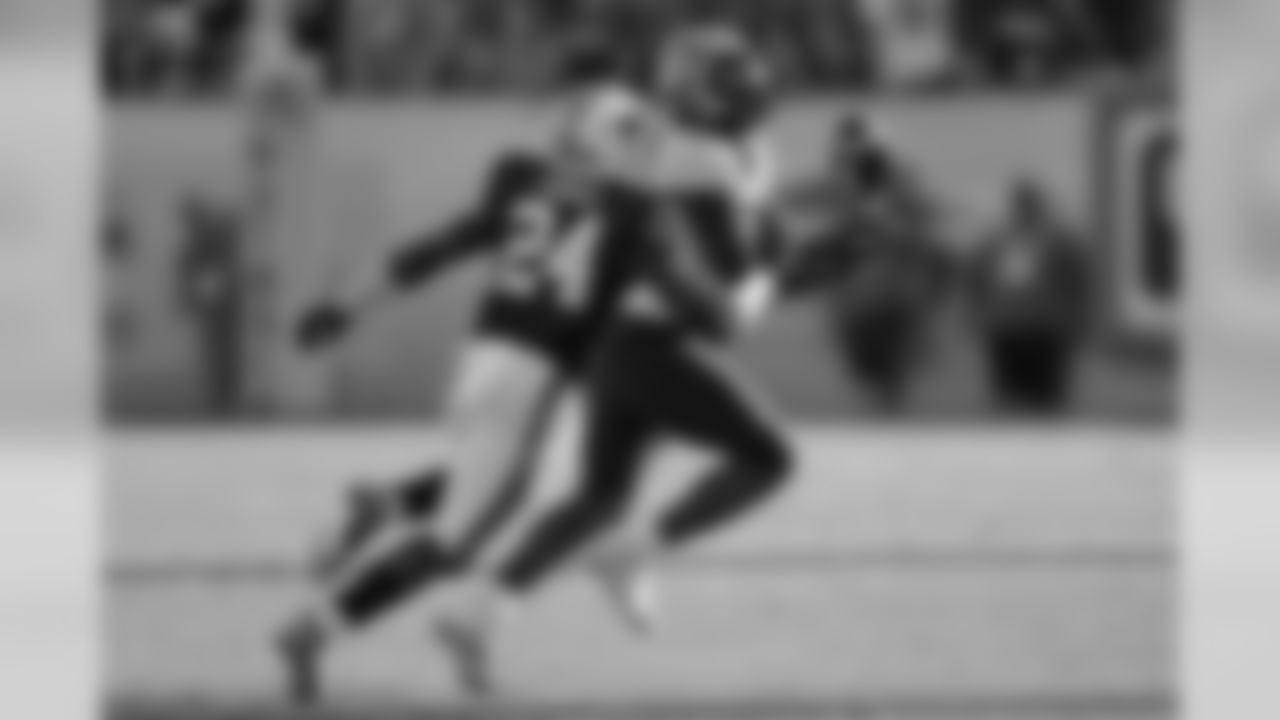
Minnesota wide receiver Tyler Johnson (6) makes a catch after getting around Auburn defensive back Daniel Thomas (24) during the second half of the Outback Bowl NCAA college football game Wednesday, Jan. 1, 2020, in Tampa, Fla. (AP Photo/Chris O'Meara)
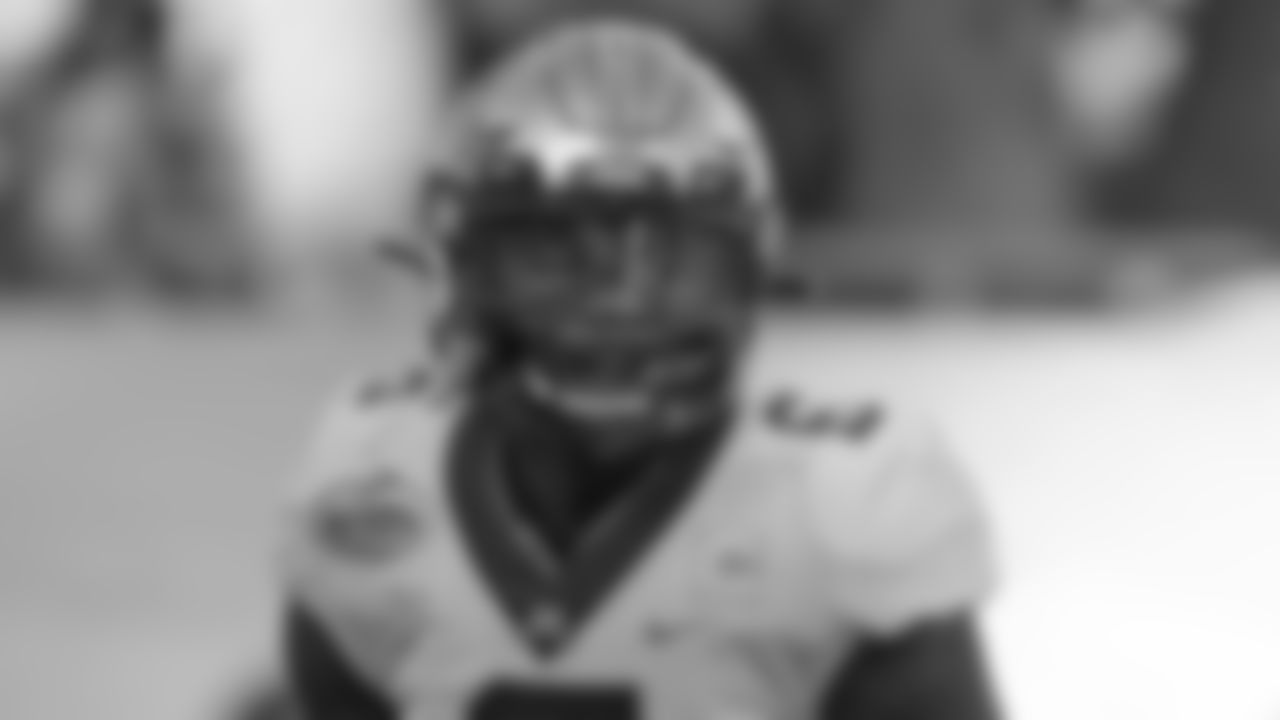
Minnesota wide receiver Tyler Johnson during the second half of the Outback Bowl NCAA college football game against Auburn Wednesday, Jan. 1, 2020, in Tampa, Fla. (AP Photo/Chris O'Meara)

Minnesota wide receiver Tyler Johnson catches the ball during the NFL football scouting combine, Thursday, Feb. 27, 2020, in Indianapolis. (Aaron M. Sprecher via AP)

Minnesota wide receiver Tyler Johnson runs after the catch during the NFL football scouting combine, Thursday, Feb. 27, 2020, in Indianapolis. (Aaron M. Sprecher via AP)

Minnesota wide receiver Tyler Johnson runs a drill at the NFL football scouting combine in Indianapolis, Thursday, Feb. 27, 2020. (AP Photo/Michael Conroy)

Minnesota wide receiver Tyler Johnson runs a drill at the NFL football scouting combine in Indianapolis, Thursday, Feb. 27, 2020. (AP Photo/Michael Conroy)

Minnesota wide receiver Tyler Johnson runs a drill at the NFL football scouting combine in Indianapolis, Thursday, Feb. 27, 2020. (AP Photo/Michael Conroy)

Minnesota wide receiver Tyler Johnson runs after the catch during the NFL football scouting combine, Thursday, Feb. 27, 2020, in Indianapolis. (Aaron M. Sprecher via AP)
Sixth-Round DT Khalil Davis: #94
And here we finally get to a new Buccaneer who gets to keep his collegiate numerical identity, as Davis wore no. 94 at Nebraska. It became open in Tampa when outside linebacker Carl Nassib left in free agency for the Las Vegas Raiders in March.
This is also a number that has some pretty prominent Buccaneer alumni, including Steve White, Greg Spires and Adrian Clayborn. White and Spires kept it in use, and racked up a combined 168 games and 38 sacks, from 1996 through 2007. Spires wore it as the team's starting left defensive end in the 2002 Super Bowl season, bookending Simeon Rice, and he had an eight-sack campaign in it in 2004. Other no. 94s in team history include Robert "Pig" Goff, George Johnson and Will Clarke.
View pictures of Raymond Calais, the 245th overall pick in the 2020 NFL Draft.
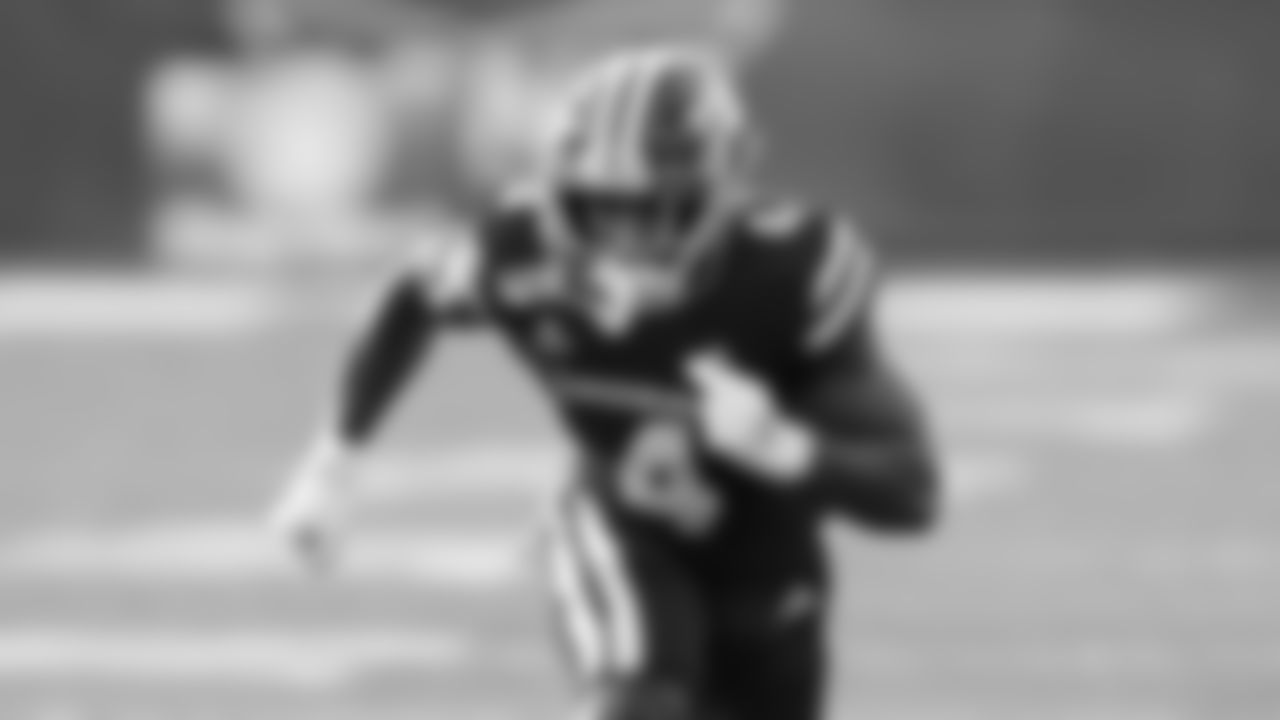
Louisiana Lafayette running back Raymond Calais (4) runs during an NCAA college football game against Liberty, Saturday, September 7, 2019, in Lafayette, La. (AP Photo/Tyler Kaufman)
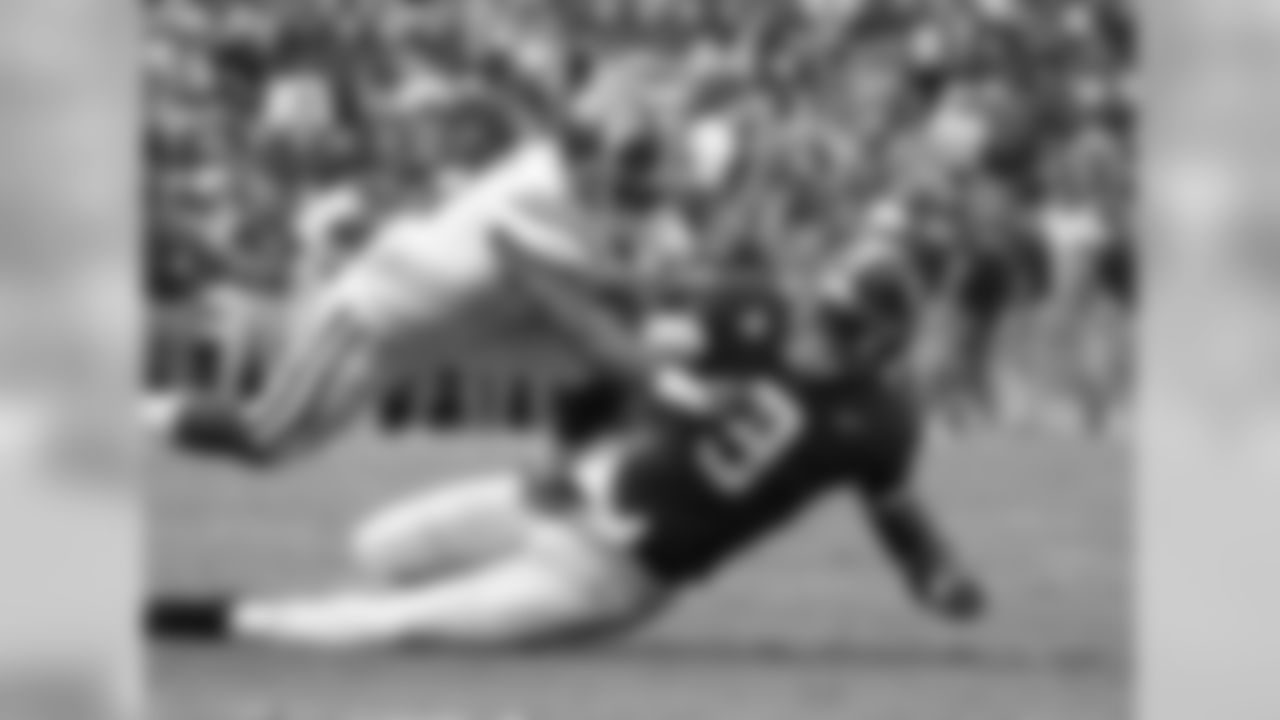
Alabama linebacker Eyabi Anoma (9) tackles Louisiana-Lafayette running back Raymond Calais (4) for a loss during the second half of an NCAA college football game, Saturday, Sept. 29, 2018, in Tuscaloosa, Ala. Alabama won 56-14. (AP Photo/Butch Dill)
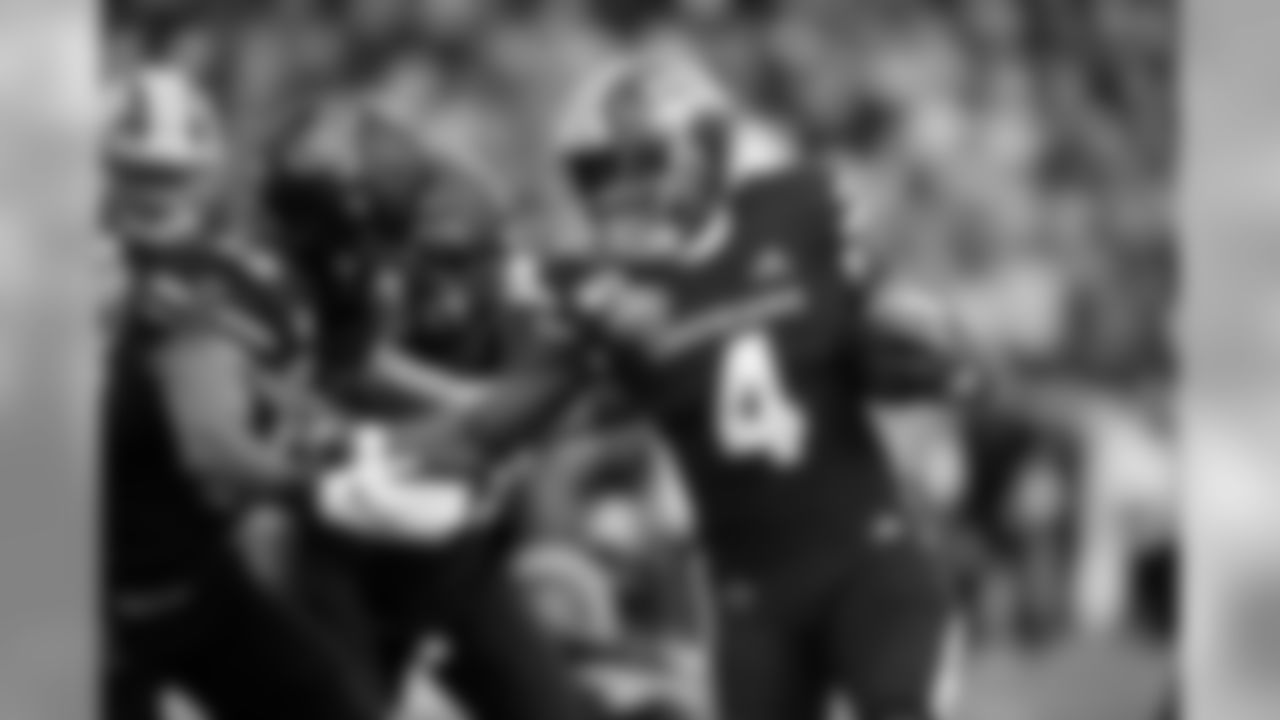
Louisiana-Lafayette running back Raymond Calais (4) fends off Appalachian State defensive back Kaiden Smith (13) during the first half of an NCAA college football game in the Sun Belt Football Championship on Saturday, Dec. 7, 2019, in Boone, N.C. (AP Photo/Brian Blanco)

American Team running back Raymond Calais, of Louisiana-Lafayette, stands on the field during the second half of the Collegiate Bowl college football game against the National Team Saturday, Jan. 18, 2020, in Pasadena, Calif. (AP Photo/Mark J. Terrill)

Louisiana running back Raymond Calais does the bench press at the NFL football scouting combine Thursday, Feb. 27, 2020, in Indianapolis. (AJ Mast/AP Images for NFL)

Louisiana running back Raymond Calais runs the 40-yard dash at the NFL football scouting combine in Indianapolis, Friday, Feb. 28, 2020. (AP Photo/Michael Conroy)

Louisiana running back Raymond Calais runs a drill at the NFL football scouting combine in Indianapolis, Friday, Feb. 28, 2020. (AP Photo/Charlie Neibergall)

Louisiana running back Raymond Calais runs a drill at the NFL football scouting combine in Indianapolis, Friday, Feb. 28, 2020. (AJ Mast via AP Images)

Louisiana running back Raymond Calais runs a drill at the NFL football scouting combine in Indianapolis, Friday, Feb. 28, 2020. (AP Photo/Michael Conroy)

Louisiana running back Raymond Calais runs a drill at the NFL football scouting combine in Indianapolis, Friday, Feb. 28, 2020. (AP Photo/Michael Conroy)

Louisiana running back Raymond Calais runs a drill at the NFL football scouting combine in Indianapolis, Friday, Feb. 28, 2020. (AP Photo/Michael Conroy)

Louisiana running back Raymond Calais runs a drill at the NFL football scouting combine in Indianapolis, Friday, Feb. 28, 2020. (AP Photo/Michael Conroy)

Louisiana-Lafayette running back Raymond Calais runs the 40-yard dash during the NFL football scouting combine, Friday, Feb. 28, 2020, in Indianapolis. (Aaron M. Sprecher via AP)

Louisiana-Lafayette running back Raymond Calais catches the ball during the NFL football scouting combine, Friday, Feb. 28, 2020, in Indianapolis. (Aaron M. Sprecher via AP)
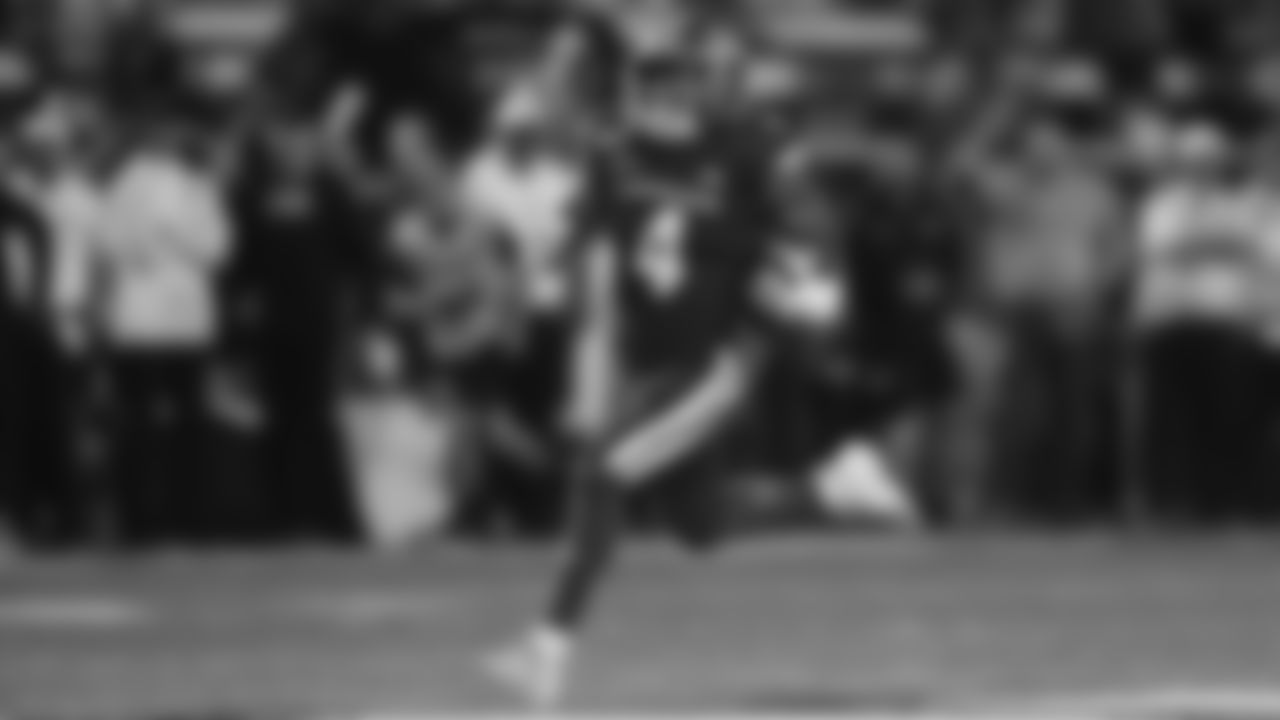
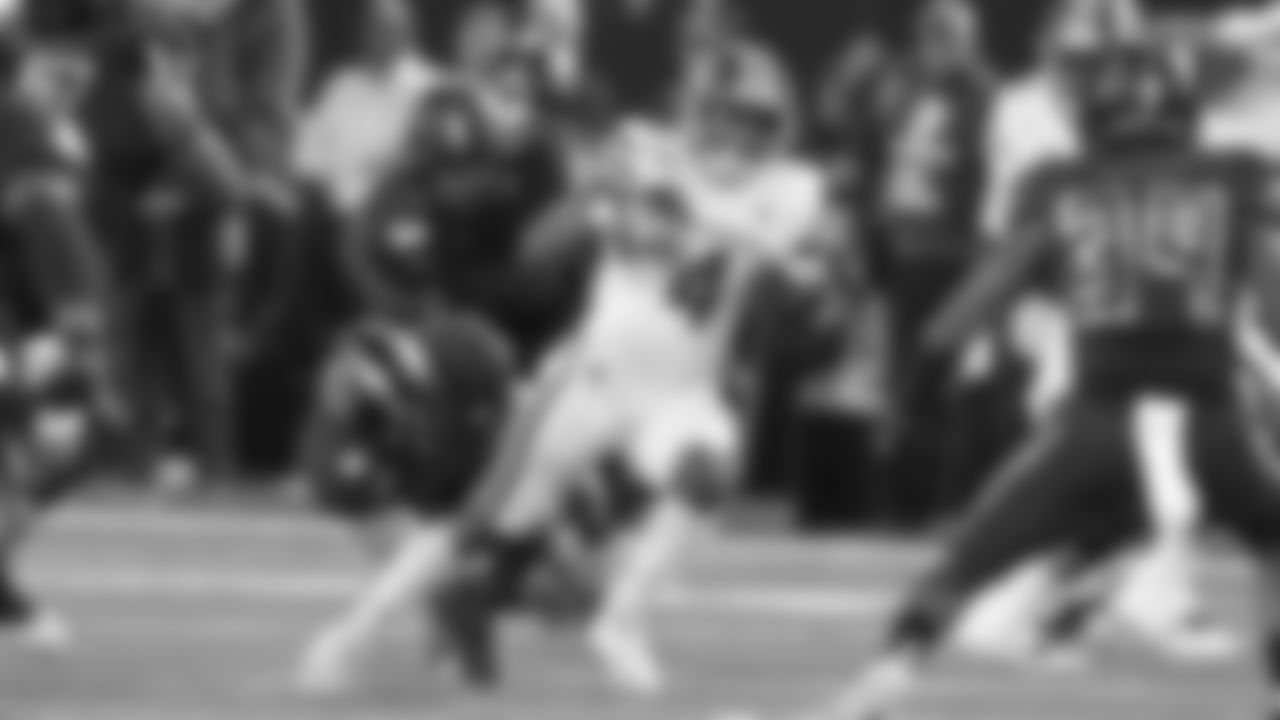
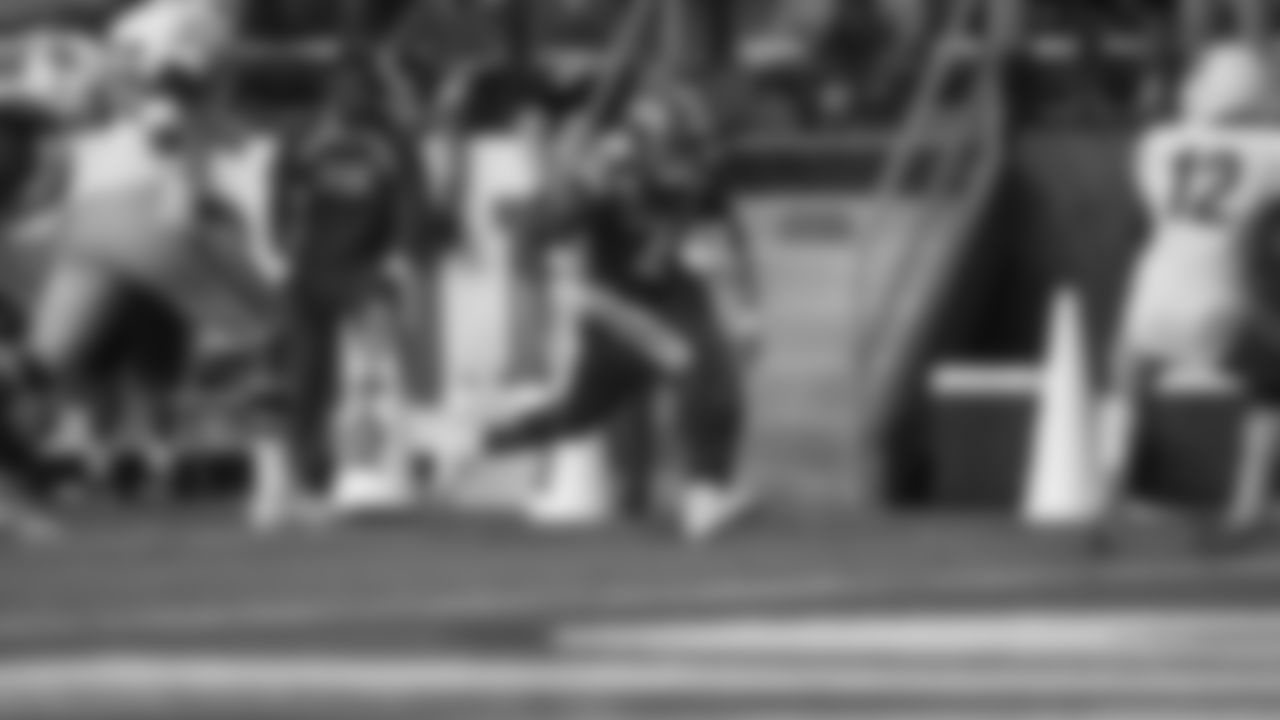
Seventh-Round LB Chapelle Russell: #53
Most numbers in the 50s are going to have some notable Buccaneer alumni because that's where most linebackers find themselves and the franchise has a long history of standout linebackers. In Russell's case, he'll get to meet the most prominent no. 53 in team history whenever he first gets to visit the AdventHealth Training Center. Shelton Quarles is currently the Buccaneers' director of football operations but he wore no. 53 from 1997-2006, played 148 games with 113 starts and made the Pro Bowl in 2002. That was the Buccaneers' Super Bowl-winning team, of course, and Quarles is one of the players immortalized in the "Moment of Victory" statue located in the lobby of team headquarters.
Russell wasn't allowed to use his college number in the NFL due to the position he plays but he at least got to include it in his new number. He was no. 3 for the Temple Owls.
Before Quarles, linebacker Hugh Green was the most prominent no. 53 in Bucs history, making two Pro Bowls but not having a tenure in Tampa as long as Quarles did. Even though offensive and defensive linemen are also allowed to have numbers in the 50s, it has almost exclusively been the property of linebackers in Tampa. The one exception was defensive end Nick Reed, who wore it for three games in 2011. Demone Harris wore it for one game last year but was classified as an outside linebacker at the time.
Seventh-Round RB Raymond Calais: #43
Calais did the same thing as Russell, moving on from his single-digit college number by necessity but still keeping that digit in his new designation. Calais wore no. 4 for Louisiana-Lafayette.
The 43 jersey has most commonly been used by fullbacks in team history, though there have been some notable ball-carriers with that number, too. Most recently Peyton Barber wore it at the beginning of his career before he got the chance to switch to no. 25. Before him, Bobby Rainey wore it for 41 games and 11 starts from 2013-15, during which he recorded an 80-yard touchdown run against the Bills that is the second-longest rushing play in franchise history.
Jerry Eckwood had several productive seasons as a running back in the 43 jersey for the Bucs from 1979-81. Among the fullbacks who have worn that number are Rudy Harris, William Howard, Kevin McLeod and Jameel Cook, who was on the Super Bowl team. Defensive backs Beasley Reece, Elbert Mack, Ahmad Black and T.J. Ward have all worn it as Bucs, too.



































